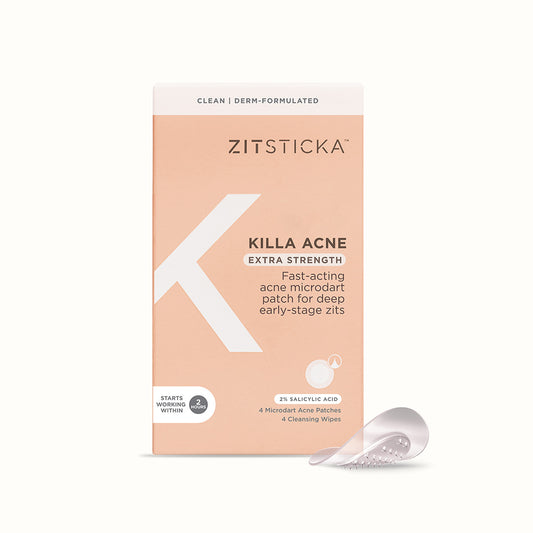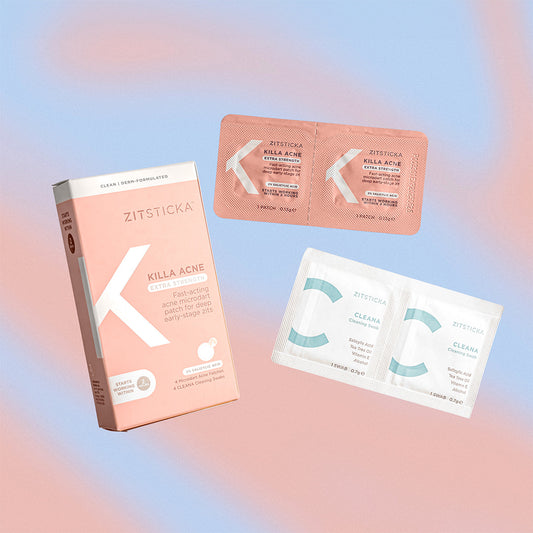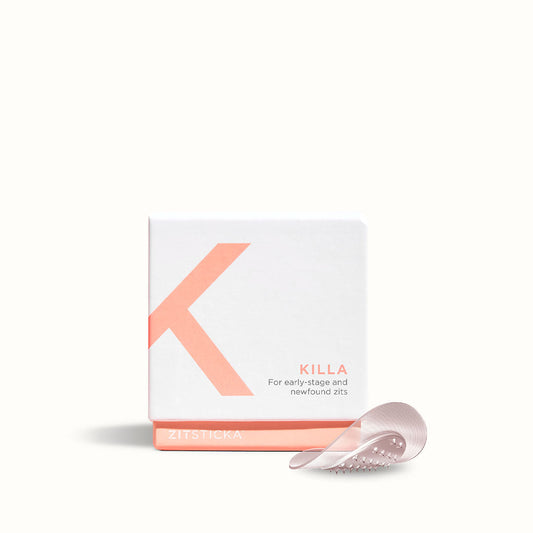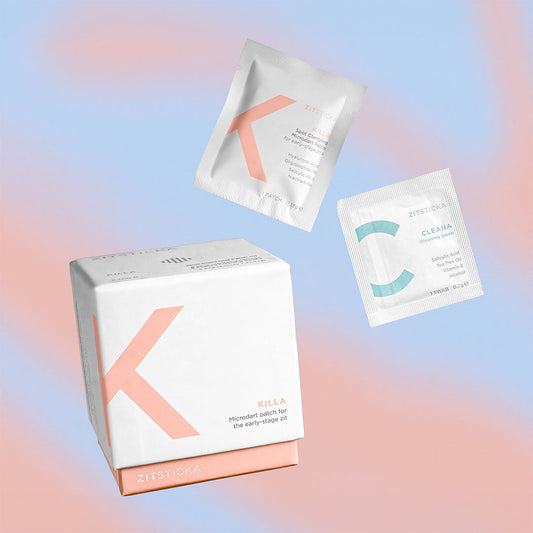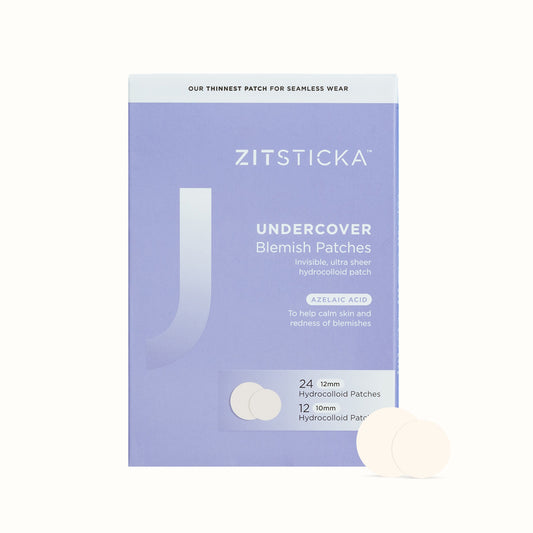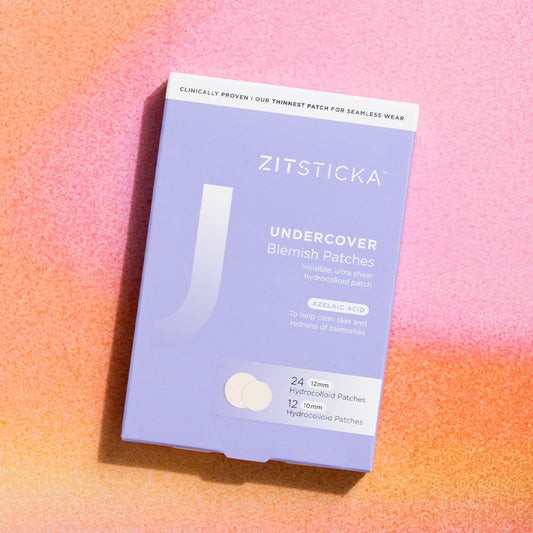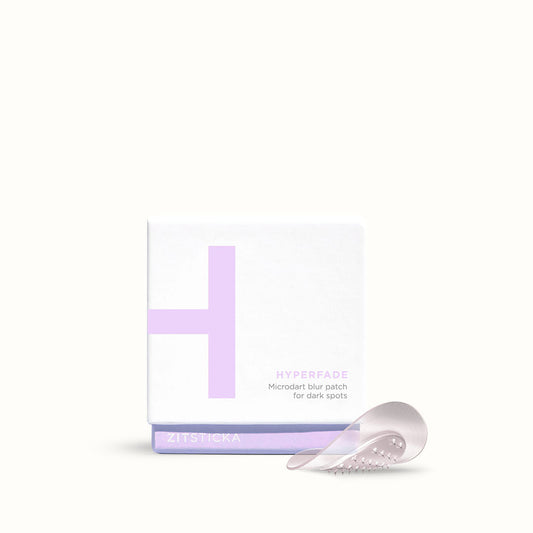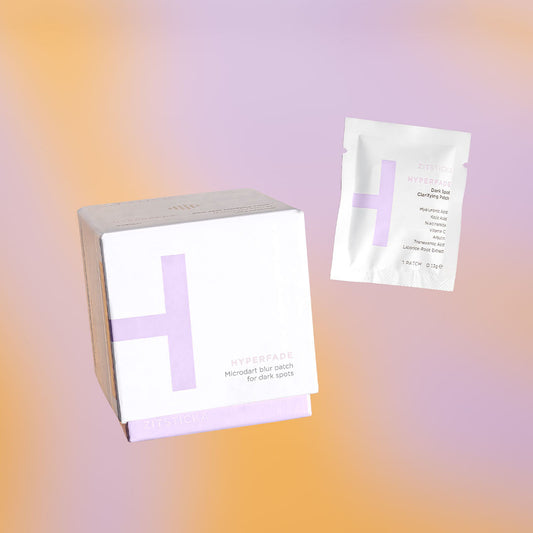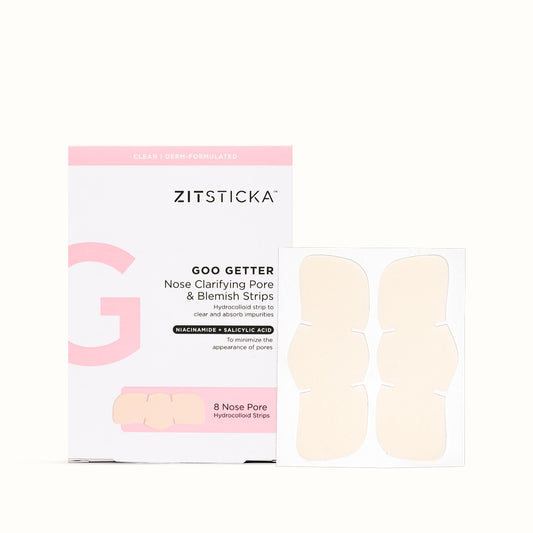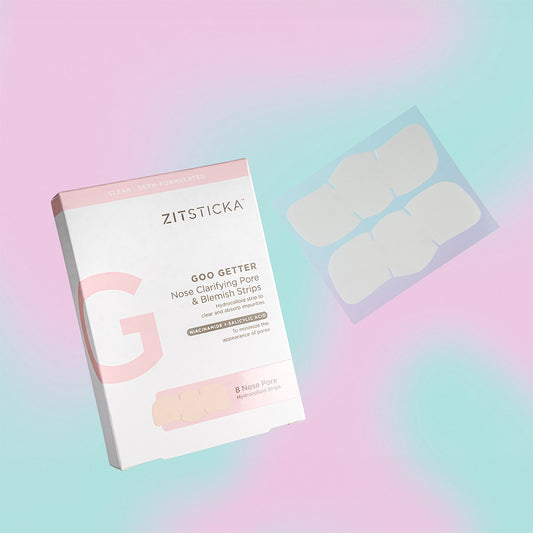With skincare being the sprawling ocean of opportunity that it is, giving your skin (yours, not someone else’s) what it needs is like trying to locate your new car in a mall car park: confusing and sometimes scary.
So rather than blindly smearing potions and lotions on your confused face and stressing it out more, or submitting to a laborious 10-step Korean skincare routine, there’s a better option: targeted actives!
In the case of both serums and the KILLA patch, your skin receives a much higher concentration of ingredients than say, lotions and moisturizers, which contain emollients and thickeners. Serums and our patch are free from fillers and are composed of potent ingredients (or in the case of many serums, a singular active) with smaller molecules, so they are quickly and deeply absorbed.
Here are five multifunctional actives that will form fast friends with many different skin types.
Hyaluronic Acid
Good for: anyone with a face.
Need intense hydration? Hyaluronic is like a water park for your face. Actually, it’s more like a full sponge that generously gifts a steady stream of hydration to your skin through the day. This is because it’s a humectant (meaning moisture-binding) and can store moisture up to 100 times its volume. We’re serious! Hyaluronic Acid can also have a plumping effect—however, it does have a short lifespan within the body, making injectables more appropriate for permanency. One more cool thing: because hyaluronic acid is naturally occurring in the body, the possibility of reaction is very slim.
Salicylic Acid
Good for: acne-prone skin, exfoliation for all skin types, the morning after using a retinol.
There are a bunch of much-hyped chemical exfoliants out there, and salicylic is among the most effective and versatile. It gently sloughs away dead skin cells to reveal a softer, more cloud-like texture—that’s true!—but it also has the ability to penetrate beyond the epidermis and exfoliate inside the actual pore, making it one of acne’s greatest challengers. Bonus? Exfoliated skin is able to better accept other serums and actives.
Niacinamide
Good for: reducing the appearance of scars and hyperpigmentation, acne-prone skin, oily or combo skin.
You know when you convince yourself it’s a great idea to pop that zit, and it gets mad and leaves behind a dark stain? Niacinamide can help with that. It blocks the creation of melanin, the pigment that colors scars and areas of hyperpigmentation. It’s also able to enhance cellular bonds and tighten skin, forging an anti-inflammatory response that can prevent acne. But we’re not done! There’s also evidence to suggest Niacinamide (or Vitamin B3) regulates the production of sebum. Made by angels, it would seem.
Retinol
Good for: acne-prone skin, diminishing the look of wrinkles and fine lines.
Recall our pimple from earlier that we popped against our better judgement. If a scab of any kind remains, or flaking, or anything raised and texturally problematic, Retinol (or Vitamin A) is the business. Retinol accelerates cell turnover and replaces dead skin cells with fresh ones. For this reason, it’s also a loyal friend in warding off the enemy (wrinkles), and a good choice for anyone in their mid-to-late twenties interested in a preventative routine.
Aurein (Oligopeptide-76)
Good for: acne-prone skin, expediting healing.
The actives on this list are fairly notorious in the skincare world—all except Aurein. This ~furtive~ ingredient is relatively new by comparison (and features in the ZitSticka KILLA patch). Aurein is a hard-working antimicrobial that insists on sucking bacteria from the nucleus of your pimple. Also: it’s a type of peptide (protein fragment), meaning it promotes skin firmness and resilience too.
Now you have the catalogue of actives, here's what you should never mix together.

